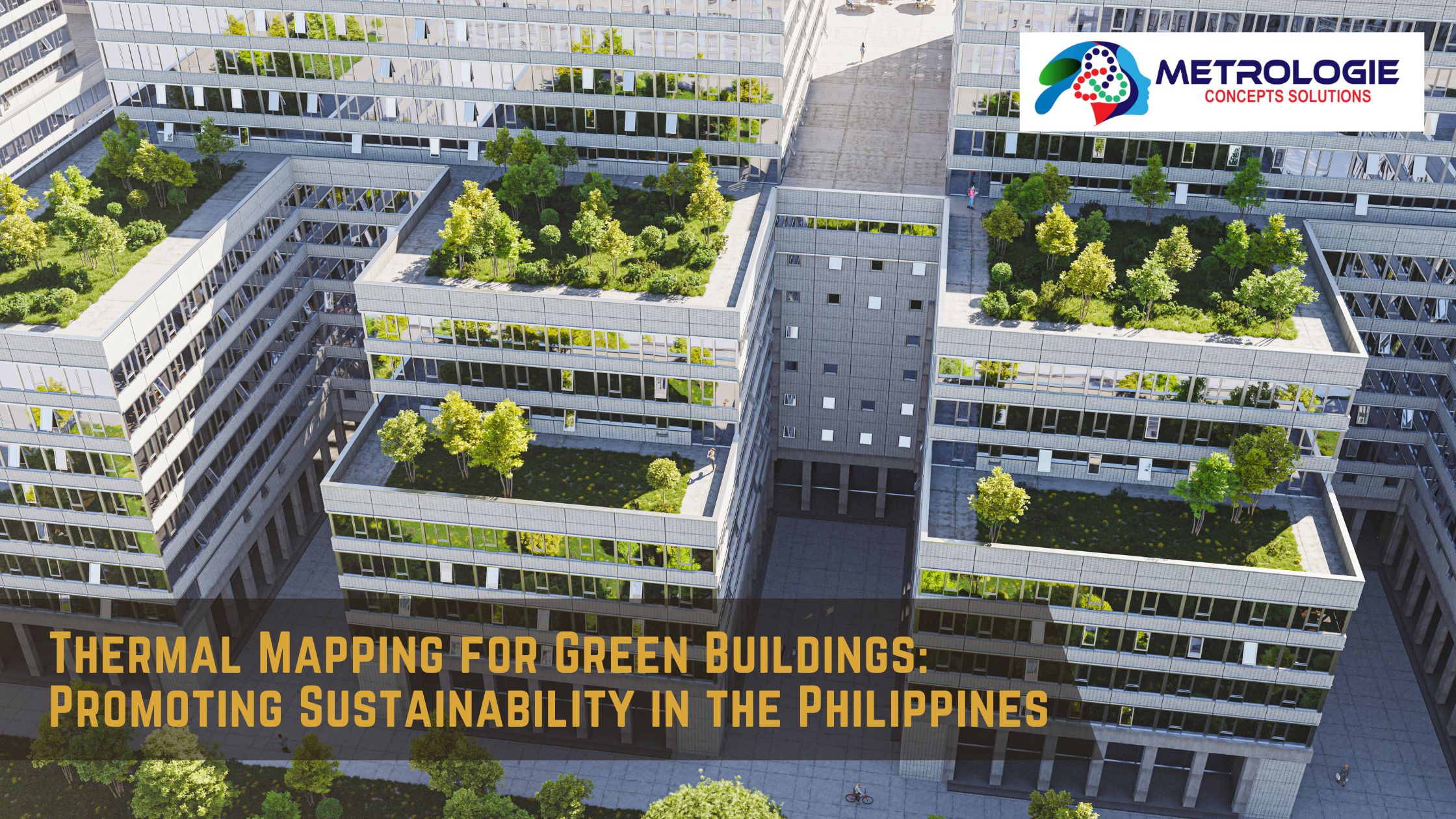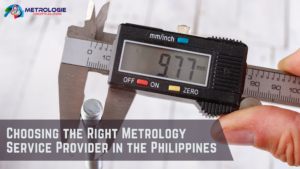Introduction
In the era of climate change and environmental awareness, the concept of green buildings has gained significant traction worldwide. The Philippines, with its commitment to sustainable development, is increasingly embracing green building practices. Central to these practices is the concept of thermal mapping, a critical process that ensures energy efficiency, comfort, and environmental sustainability in building design and operation.
Thermal mapping is not just a technical procedure; it is a vital aspect of creating buildings that are not only energy-efficient but also contribute to the overall well-being of their occupants. This article explores the importance of thermal mapping in promoting sustainability in green buildings in the Philippines, detailing how it contributes to energy efficiency, occupant comfort, and environmental conservation.
1. Understanding Green Buildings
What Are Green Buildings?
Green buildings, also known as sustainable buildings, are structures designed and operated in a way that reduces their environmental impact. These buildings use resources such as energy, water, and materials more efficiently than traditional buildings and aim to reduce their carbon footprint through various sustainable practices.
In the Philippines, the concept of green buildings is gaining momentum as more developers and architects recognize the importance of sustainability in construction. Green buildings are designed to minimize energy consumption, reduce waste, improve indoor environmental quality, and promote the use of renewable energy sources.
Benefits of Green Buildings
Green buildings offer numerous benefits, including:
- Energy Efficiency: Green buildings are designed to use less energy, which reduces greenhouse gas emissions and lowers operating costs. This is achieved through the use of energy-efficient technologies, such as LED lighting, energy-efficient HVAC systems, and renewable energy sources like solar panels.
- Water Conservation: Sustainable buildings incorporate water-saving fixtures, rainwater harvesting systems, and wastewater treatment processes, which help in conserving water resources.
- Improved Indoor Air Quality: Green buildings use materials and ventilation systems that improve indoor air quality, contributing to the health and well-being of occupants.
- Waste Reduction: Green buildings prioritize the use of sustainable materials and recycling practices, reducing the amount of waste generated during construction and operation.
- Enhanced Comfort and Well-being: By optimizing temperature, humidity, and lighting, green buildings create a comfortable and healthy environment for occupants.
The Role of Thermal Mapping in Green Buildings
Thermal mapping is a crucial component of green building design and operation. It involves the use of advanced technology to monitor and analyze temperature variations within a building, ensuring that the building’s thermal environment is optimized for energy efficiency and occupant comfort.
In green buildings, thermal mapping is used to identify areas where temperature imbalances occur, allowing for adjustments that improve the overall energy performance of the building. By ensuring that heating, ventilation, and air conditioning (HVAC) systems are operating efficiently, thermal mapping helps reduce energy consumption and greenhouse gas emissions.
2. The Importance of Thermal Mapping
What is Thermal Mapping?
Thermal mapping is a process that involves measuring and analyzing temperature distributions within a building or space. This is typically done using sensors, infrared cameras, and other monitoring tools that provide detailed information about how heat is distributed and retained in different areas.
The data collected through thermal mapping is used to create thermal maps, which visually represent temperature variations within the building. These maps are then analyzed to identify areas where temperature control can be improved, leading to better energy efficiency and occupant comfort.
Applications of Thermal Mapping
Thermal mapping is used in various applications within green buildings, including:
- HVAC System Optimization: Thermal mapping helps in optimizing the performance of HVAC systems by identifying areas where temperature control is inadequate. This ensures that heating and cooling are distributed evenly throughout the building, reducing energy consumption and improving comfort.
- Energy Audits: Thermal mapping is often used in energy audits to assess the energy performance of a building. By identifying areas of heat loss or gain, thermal mapping helps in pinpointing areas where energy efficiency can be improved.
- Building Envelope Assessment: Thermal mapping is used to assess the performance of the building envelope, including walls, roofs, and windows. By identifying areas where insulation is insufficient or where heat is escaping, thermal mapping helps in improving the thermal performance of the building.
- Indoor Environmental Quality: Thermal mapping contributes to improving indoor environmental quality by ensuring that temperature and humidity levels are maintained within comfortable ranges. This is particularly important in green buildings, where occupant health and well-being are a priority.
Benefits of Thermal Mapping in Green Buildings
Thermal mapping offers several benefits in the context of green buildings:
- Energy Efficiency: By identifying areas of heat loss or gain, thermal mapping helps in optimizing energy use, leading to significant energy savings.
- Reduced Carbon Footprint: By improving energy efficiency, thermal mapping contributes to reducing the carbon footprint of green buildings, aligning with the goals of sustainable development.
- Occupant Comfort: Thermal mapping ensures that indoor temperatures are maintained at comfortable levels, enhancing the well-being of occupants.
- Cost Savings: By improving energy efficiency and reducing the need for costly repairs, thermal mapping leads to long-term cost savings for building owners and operators.
- Compliance with Green Building Standards: Thermal mapping helps green buildings comply with various sustainability standards and certifications, such as LEED (Leadership in Energy and Environmental Design) and BERDE (Building for Ecologically Responsive Design Excellence).
3. Thermal Mapping Techniques and Technologies
Traditional vs. Modern Thermal Mapping Techniques
Thermal mapping has evolved significantly over the years, with modern techniques offering more accurate and detailed results compared to traditional methods. Traditional thermal mapping techniques involved manual temperature measurements using thermometers or temperature probes. While these methods provided basic information, they were time-consuming and lacked the precision needed for comprehensive thermal analysis.
Modern thermal mapping techniques, on the other hand, utilize advanced technologies such as infrared thermography, wireless sensors, and data analytics. These technologies provide real-time data on temperature variations, allowing for more accurate and detailed thermal maps.
Infrared Thermography
Infrared thermography is one of the most commonly used techniques in thermal mapping. It involves the use of infrared cameras to capture images that show temperature variations within a building. These images, known as thermograms, provide a visual representation of heat distribution, making it easier to identify areas of heat loss, poor insulation, or thermal bridges.
Infrared thermography is particularly useful in assessing the thermal performance of the building envelope, as it can detect areas where heat is escaping or where insulation is inadequate. This information is crucial for improving energy efficiency and reducing the carbon footprint of green buildings.
Wireless Sensors
Wireless sensors are another important technology used in thermal mapping. These sensors are strategically placed throughout the building to continuously monitor temperature, humidity, and other environmental factors. The data collected by these sensors is transmitted to a central system, where it is analyzed to create thermal maps.
Wireless sensors offer several advantages, including real-time monitoring, ease of installation, and the ability to cover large areas. They are particularly useful in green buildings, where maintaining optimal indoor environmental conditions is essential for occupant comfort and energy efficiency.
Data Analytics and Thermal Mapping Software
Data analytics plays a critical role in modern thermal mapping. Advanced thermal mapping software uses algorithms to analyze the data collected by sensors and infrared cameras, generating detailed thermal maps that highlight areas of concern.
This software can also simulate different scenarios, allowing building operators to test various energy-saving strategies and identify the most effective solutions. By leveraging data analytics, green building operators can make informed decisions that improve energy efficiency and reduce environmental impact.
4. Case Studies: Thermal Mapping in Green Buildings in the Philippines
Case Study 1: The Net Park Building, Bonifacio Global City
The Net Park Building in Bonifacio Global City is one of the Philippines’ premier green buildings, designed to achieve LEED certification. As part of its commitment to sustainability, the building’s management implemented thermal mapping to optimize energy efficiency and occupant comfort.
Thermal mapping was used to assess the performance of the building’s HVAC system, identify areas of heat gain through the building envelope, and monitor indoor environmental conditions. The results of the thermal mapping analysis led to several energy-saving measures, including improved insulation, optimized HVAC operation, and better temperature control. These measures not only reduced energy consumption but also enhanced the comfort of the building’s occupants.
Case Study 2: The Zuellig Building, Makati City
The Zuellig Building in Makati City is another example of a green building in the Philippines that has successfully implemented thermal mapping. The building, which has received multiple green building certifications, uses thermal mapping to maintain its high standards of energy efficiency and indoor environmental quality.
Thermal mapping in the Zuellig Building focused on optimizing the performance of the HVAC system and improving the thermal performance of the building envelope. By identifying areas where heat was escaping and where temperature control was inadequate, the building’s management was able to implement targeted improvements that reduced energy consumption and enhanced occupant comfort.
Case Study 3: The Philippine Green Building Council Office
The Philippine Green Building Council (PHILGBC) office is itself a model of sustainable building practices. Thermal mapping played a key role in ensuring that the office met the highest standards of energy efficiency and indoor environmental quality.
Thermal mapping was used to monitor temperature variations within the office space, assess the performance of the HVAC system, and identify areas where insulation could be improved. The insights gained from thermal mapping led to several energy-saving measures, including the installation of energy-efficient windows, improved insulation, and optimized HVAC operation. These measures not only reduced the office’s energy consumption but also created a more comfortable and productive working environment.
5. The Future of Thermal Mapping in Green Buildings
Emerging Trends and Innovations
As the demand for green buildings continues to grow, so does the need for advanced thermal mapping techniques. Several emerging trends and innovations are shaping the future of thermal mapping in green buildings:
- Integration with Smart Building Systems: Thermal mapping is increasingly being integrated with smart building systems that use artificial intelligence (AI) and the Internet of Things (IoT) to monitor and control building operations. This integration allows for real-time optimization of energy use, improving the overall efficiency of green buildings.
- Predictive Analytics: Predictive analytics is another emerging trend in thermal mapping. By analyzing historical data, predictive analytics can forecast temperature variations and energy needs, allowing building operators to take proactive measures to optimize energy use.
- Enhanced Visualization Tools: Advanced visualization tools are making it easier for building operators to interpret thermal mapping data. These tools provide interactive thermal maps that allow users to explore different areas of the building and identify potential issues quickly.
The Role of Government and Industry in Promoting Thermal Mapping
The Philippine government and industry stakeholders play a crucial role in promoting the use of thermal mapping in green buildings. By providing incentives for sustainable building practices and setting standards for energy efficiency, the government can encourage more developers to adopt thermal mapping as part of their green building strategies.
Industry organizations, such as the Philippine Green Building Council, also have a key role to play in promoting thermal mapping. By providing education and resources on the benefits of thermal mapping, these organizations can help developers and building operators understand the importance of this technology in achieving sustainability goals.
Conclusion
Thermal mapping is an essential tool for promoting sustainability in green buildings in the Philippines. By providing detailed insights into temperature variations and energy use, thermal mapping helps building operators optimize energy efficiency, improve occupant comfort, and reduce the environmental impact of their buildings.
As the demand for green buildings continues to grow, thermal mapping will play an increasingly important role in ensuring that these buildings meet the highest standards of sustainability. With the support of government, industry, and innovative technologies, thermal mapping will continue to drive the development of green buildings that contribute to a more sustainable future for the Philippines.



